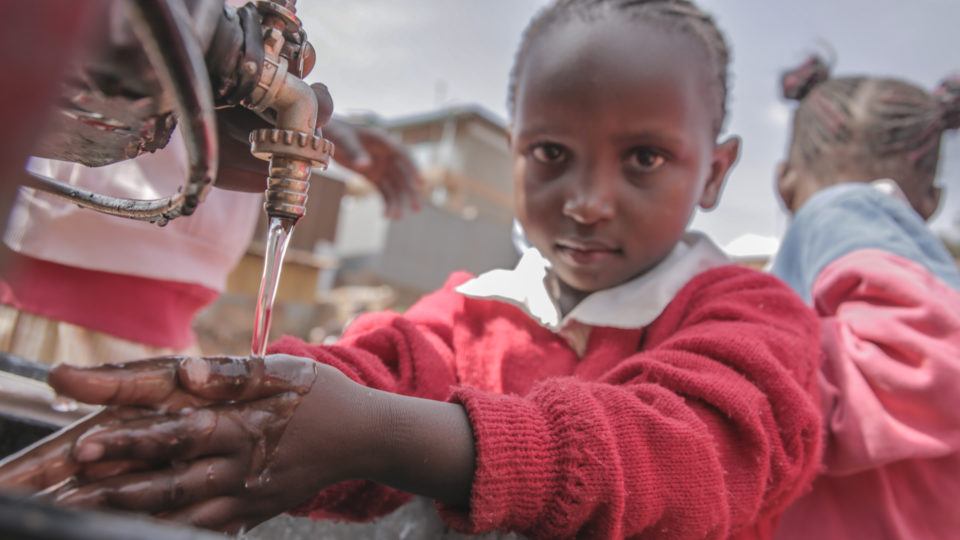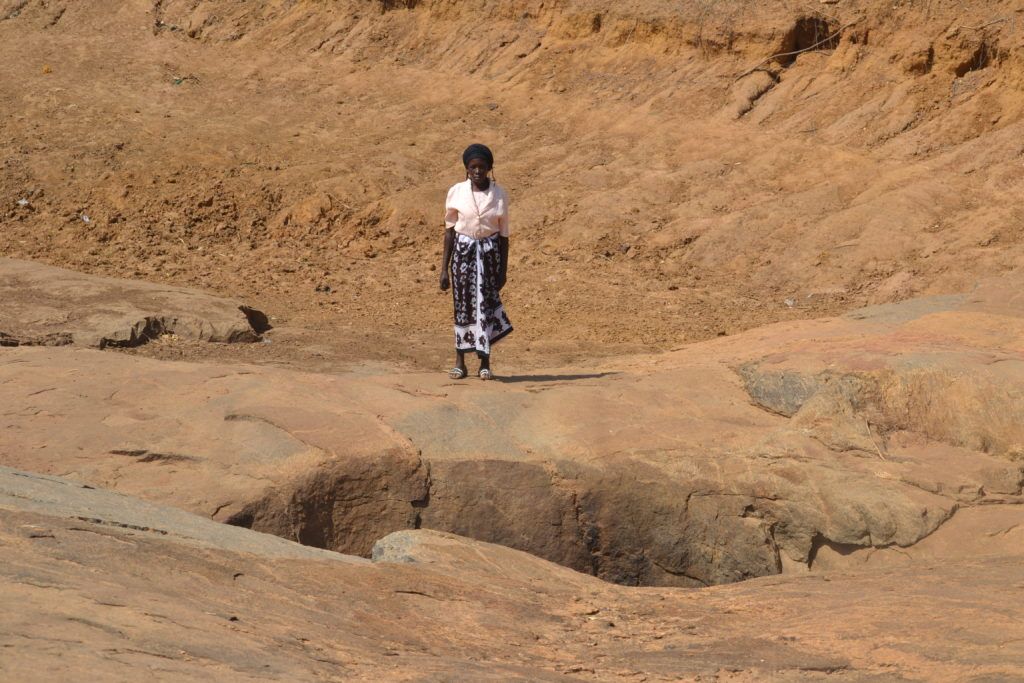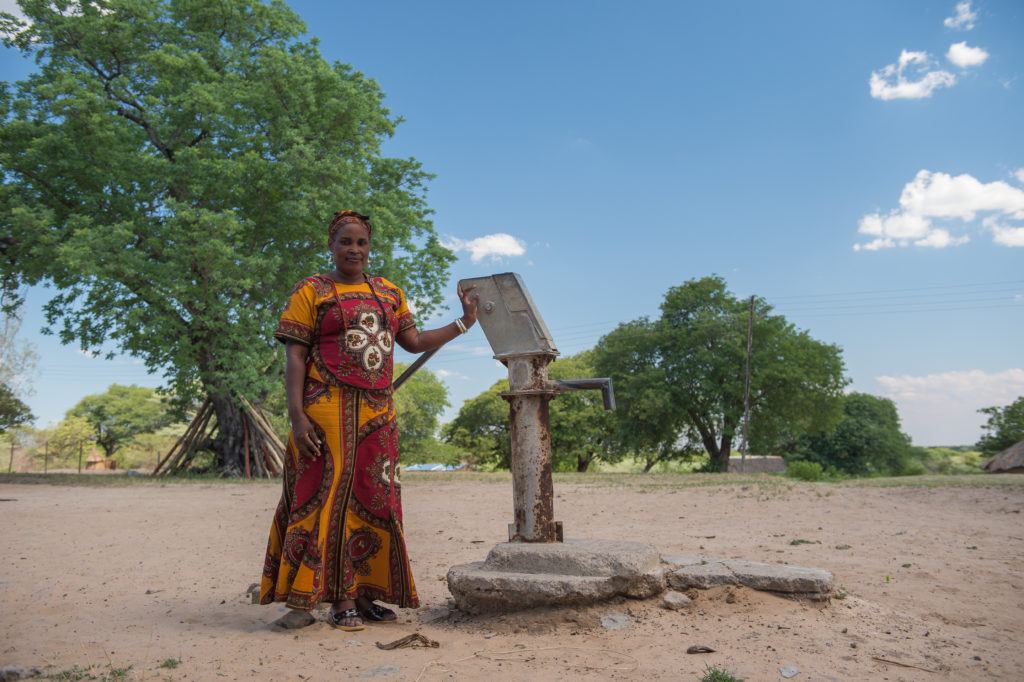Join Hands for Change on World Water Day

March 22nd is World Water Day, a day that calls us to focus on the importance of water. This year’s theme is Nature for Water – the exploration of nature-based solutions to 21st century water challenges. More than two billion people live without safe drinking water at home, affecting their health, education, and livelihoods. Contaminated water continues to be the leading cause of death around the world with more than 3.4 million deaths as a result of a water-related disease.
2.1 billion people live without safe drinking water at home
Today, we share stories from some of the most remote places on earth. Stories of mothers and children from Kenya, South Sudan, Zambia, and Haiti. These are stories of loss and struggle, and hope for dignity and a chance at a better life. Their stories are all our stories.
On World Water Day and every day, let’s heed Benjamin Franklin’s wise words,
When the well runs dry, we shall know the value of water.
Kenya: Christine’s Story
We walk for hours, every day, to find water. It’s what we do. And the journey is difficult and dangerous.
My son, Kiama, and his friends walked to the water hole because they were thirsty. Kiama knelt at the edge and leaned down to get a drink, and that’s when he fell in. He friends tried to help, but no one knew how to swim. The stone was slippery. My son couldn’t climb out. The children ran for a mile to get help. I remember hearing my neighbor say, ‘A child has fallen into the water hole and drowned.’ We all ran as fast as we could – all silently praying that it was not our child. By the time we got there it was too late. The child in the water was dead. The child in the water was my son.
I share this story hoping that some positive change might come from my son’s death and from my grief.
– Christine, Mother and Resident, Kitui South, Kenya CHAMPS
Water is a force for life, vital for improving women and children’s health and productivity. It is the core of sustainable development. – Bruce Wilkinson, CMMB’s CEO & President
South Sudan: Dr. Harry’s Story
I have served as a medical volunteer for many years, and in most of the underserved areas of the world where I’ve been, water is a big problem. Nzara is part of South Sudan CHAMPS. It is a small town that is fortunate to have a few streams and rivers with water for the entire year, even during the dry season. However, the water is contaminated. Sadly, most families just don’t have the money to treat the water, so a lot of people get sick. Many infectious diseases – especially gastrointestinal issues that result in vomiting, diarrhea, and life-threatening dehydration – put young children, especially infants, at risk.
In Nzara, CHAMPS works with the Camboni Sisters at the St. Teresa Hospital. The hospital compound is blessed with three good wells. With the support of CMMB and other partners, St. Teresa’s installed a solar-powered water pump. It’s amazing. The clean water from the wells is pumped into large tanks that supply the hospital and other buildings in the compound. The patients and their relatives (who assist with care) – as well as hospital staff – all have clean water for drinking, food preparation, and bathing 24/7.
Safe, running water is so basic to good health, especially at a healthcare facility. If patients don’t have safe water to drink, and if staff can’t wash their hands, you’re going to see significant infection and illness rates.
– Dr. Harry R. Owens, Jr., Alumni Volunteer, CMMB South Sudan
Water and sanitation affect the health of every woman and every child. Advocacy and awareness, community mobilization and partnerships with families, healthcare facilities, and schools turn the most vulnerable populations into engaged stakeholders, no matter where they live. – Enrique Naupari, Senior Specialist Livelihood and Healthy Hopes, Peru
Zambia: Gertrude’s Story
In Simungoma, part of our Zambia CHAMPS zone, children wake up as early as 4 AM to collect water. They can spend up to six hours waiting in line for their turn at the wells. Children who make it back in time for school are often exhausted.
If water had been available at the school, Gertrude would not be dead. Water would mean so much to everyone. -Rebecca Longwe, Head Teacher, Sigmungoma Primary School
Sometimes a journey for water ends tragically. Gertrude’s thirst cost the little girl her life. Her father explained what happened the day his daughter died.
“She was at school, and children were playing. She had brought water to school but it ran out. The pump at the school has not worked for years, so there was no other choice. Gertrude and two friends crossed the road to get to the well. They were thirsty and it was the closest place to get water. The three children crossed the road safely and filled their water bottles. But on the way back, the first two children ran and Gertrude forgot to look. She didn’t see the car. It hit her and she died instantly.
Gertrude was friendly and enjoyed going to school. She was my last daughter – my baby. She was the last coin in my pocket and now she is gone. I miss her and it hurts.”
– Munalula, Gertrude’s Father
Sustainable Development Goal 6 commits the world to ensuring that everyone has access to safe water by 2030.
Haiti: Akianne’s Story
Akianne is a 68-year-old widow who lives alone in a remote area of Côtes-de-Fer, Haiti. Although, she has a latrine, it is in very poor condition. Akianne says she has other, more important priorities, like finding food to eat each day. She explains that most people in her community do not have latrines and they use the outdoors instead. Last year, this practice led to an outbreak of cholera, putting many in danger.
Despite her age and poor health, Akianne must walk for two hours just to reach a community well. The journey is challenging, with steep climbs and rocky terrain. Returning home is always more difficult. Full water contains are heavy. Akianne often leaves her home before the sun rises to avoid long lines and to reach the well before it runs dry.
Akianne knows that the water she brings home will likely make her sick. She doesn’t have money to treat the water. Her biggest worry is that someday, she will not have the strength to make the journey. She says “When that day comes, I don’t know what I will do.”
Zambia: Namata’s Story
“I miss a lot of school now, and I feel like I keep falling behind.”
Namata is 12 years old and lives in a remote village within our Zambia CHAMPS. She is one of 66 students who walk three miles to school each day – often after hours of morning chores.
Namata’s school does not have water. Each child must bring two-and-a-half gallons of water to school each day to ensure that there will be enough on hand for drinking, food preparation, cleaning, and handwashing. The school has for basic latrines. All are in disrepair. School was already a struggle for Namata. Then one day, a friend noticed blood on her uniform. Namata says, “I was in class when I got my first period. I was so embarrassed. The teacher told me to go home. There is nowhere at school to clean up, and no sanitary supplies.”
Namata’s family cannot afford to buy sanitary pads. She uses reusable cloths. Without water or facilities at school, it’s impossibly for her to attend class during her menstrual cycle. She says, “I miss a lot of school now, and I feel like I keep falling behind.”
Namata’s teacher explains, “Lack of water and sanitary supplies has a huge impact on these girls. The tragedy is that many of them will decide to drop out of school and never return.





